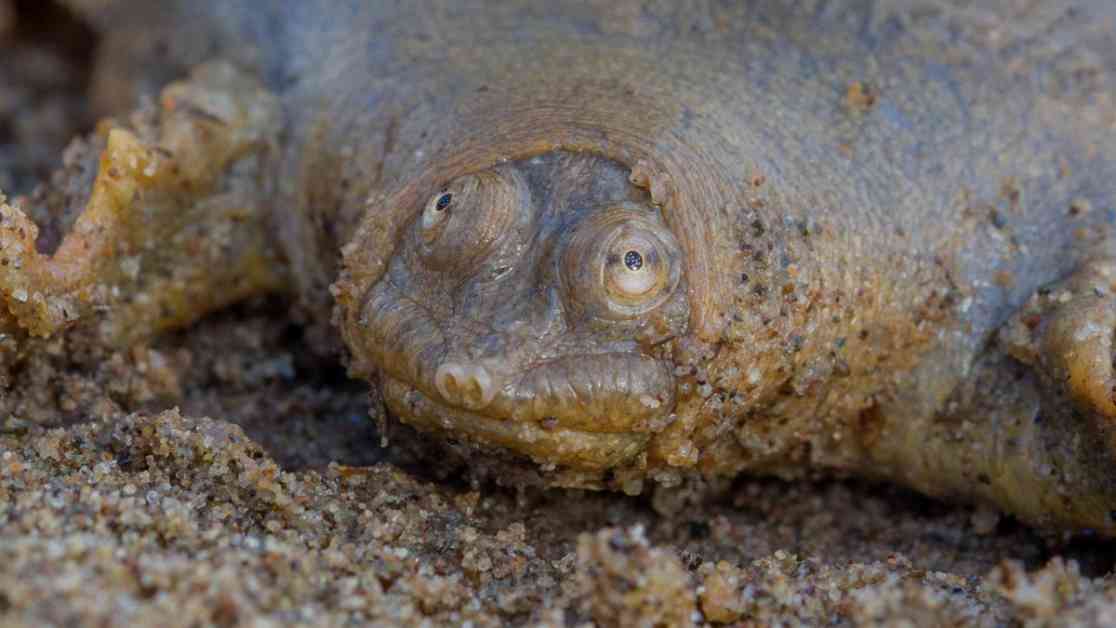The Cantor’s giant softshell turtle, scientifically known as Pelochelys cantorii, is a fascinating creature that resides in the rivers of South and Southeast Asia. These unique turtles have earned the nickname “frog-faced softshells” due to their amphibian-like facial features and leathery, flat shells.
Named after Danish zoologist Theodore Edward Cantor, these turtles spend the majority of their lives motionless, buried under mud or sand in shallow rivers. They only emerge with their eyes and snorkel-like snouts protruding when they spot potential prey such as fish, crustaceans, frogs, insects, birds, or small mammals. Despite their sluggish appearance, Cantor’s giant softshell turtles can move with surprising agility when hunting, extending their necks rapidly to strike their prey with their long claws and powerful jaws capable of crushing bone.
Unlike their hard-shelled relatives, these turtles have flat shells that are green or brown in color. They can reach impressive sizes, growing up to 40 inches (100 centimeters) in length and weighing over 100 kilograms. Some sources even suggest that they can grow even larger, making them truly remarkable creatures to behold.
One of the most intriguing features of these turtles is their ability to extract oxygen from water through their skin, allowing them to stay submerged for extended periods. However, they still need to come up to the surface to breathe air twice a day, showcasing their remarkable adaptation to their aquatic environment.
Unfortunately, Cantor’s giant softshell turtles are endangered and incredibly rare. Between 1985 and 1995, only a single specimen was found, highlighting the urgent need for conservation efforts to protect these unique creatures. Their native habitats include rivers in various countries such as India, Bangladesh, Burma, Thailand, Malaysia, Laos, Cambodia, Vietnam, China, the Philippines, and Indonesia.
In a significant discovery in 2024, biologists located the first nesting site of a Cantor’s giant softshell turtle on the banks of the Chandragiri River in Kerala, India. This finding was made possible through the collaboration with local communities, emphasizing the importance of engaging with indigenous knowledge to conserve and study these elusive turtles.
As we continue to uncover more about the fascinating world of Cantor’s giant softshell turtles, it becomes increasingly crucial to protect and preserve their habitats to ensure the survival of these remarkable creatures for future generations to admire and learn from.










